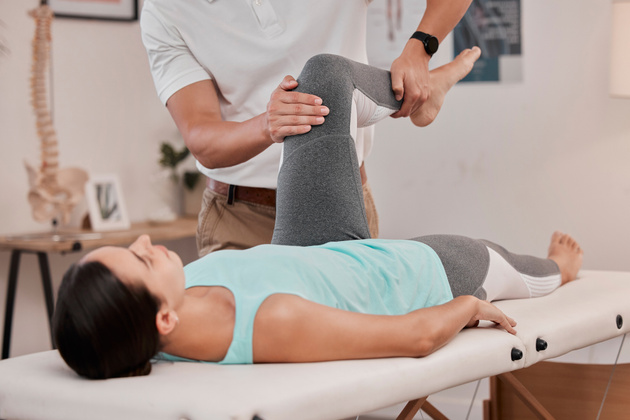What is Osteopathy?
It is a contemporary modern treatment system that focuses on treating the causes rather than the symptoms, based on the anatomy, physiology, pathology, neurology, and nutritional physiology of body tissues.

It is a contemporary modern treatment system that focuses on treating the causes rather than the symptoms, based on the anatomy, physiology, pathology, neurology, and nutritional physiology of body tissues. The patient takes precedence over the disease.
Who is an Osteopath?
An osteopath is a therapist who evaluates the functional disorders of all anatomical structures of the body holistically within the fundamental health sciences such as anatomy, physiology, pathology, neurology, psychology, and nutrition, and treats them using manual (hands-on) therapy techniques that are highly specific to each tissue, based on this clinical knowledge.
Who Can Become an Osteopath?
Individuals who have received 3500 hours of education in the fundamental health sciences (this is specifically for doctors and physiotherapists) can qualify to become osteopaths after completing an additional 1350 hours of post-graduate training from expert instructors.
The training duration is five years, with a focus on theoretical and practical aspects. These criteria are in line with the standards set by the World Health Organization.
Additionally, there are five-year Osteopathy Colleges in America and Europe.
What is the Purpose?
The goal is to train responsible, principled therapists who respect modern medical science and provide patients with quality scientific treatments. These contemporary therapeutic approaches result in significant savings in healthcare expenditures for both the government and individuals.
The Development of Osteopathy
American doctor Andrew Taylor Still (1828–1917) defined osteopathy. His principles form the foundation of osteopathic medicine:
- The importance of structure and movement
- The interdependence of structure and movement
- The indivisible unity of the organism
- The body’s ability to heal itself
In 1874, he named his method "osteopathy," combining the Greek words "osteo" (bone) and "pathie" (suffering/disorder).
In 1892, he founded the American School of Osteopathy in Kirksville, Missouri, USA.
Today, there are 54,000 osteopaths practicing in the United States. They work under the title "Doctor of Osteopathy" and are considered equivalent to medical doctors, often using medication, injections, and surgery in addition to manual techniques due to their medical training.
In Europe, osteopathy developed differently. John Martin Littlejohn (a student of Still) brought osteopathy to Europe, offering it as a field for physiotherapists. In 1917, he founded the British School of Osteopathy in London, and by 1950, it had spread across Europe.
In Europe, therapists primarily use osteopathy as an effective form of manual therapy. Since 1993, osteopathy has been recognized as a profession in the UK, followed by countries like France, Belgium, and others.
William Garner Sutherland (1873–1954) developed Cranio-Sacral Therapy within osteopathy.
In the 1980s, French osteopaths Jean Pierre Barral and Jacques Weischenk expanded osteopathy by developing Visceral Osteopathy, which includes examination and treatment of internal organs.
Advanced Manual Techniques Used in Treatment
- Specific linear manipulations and mobilizations
- Soft tissue therapies
- Cranio-Sacral Therapy
Reflexology Techniques (Meridian, Foot Sole, Periosteum, Connective Tissue, Jarricot, Diagnosis from Teeth, Facial Physionomy, etc.)
Myofascial Release Techniques
Meditation Practices
Nerve Region Mobilizations
Applications for the Mechanical Examination and Treatment of Organs
Kinesiology Testing
Areas Where Osteopathy is Used:
Osteopathy is used as a supportive method in the following applications. It cannot be claimed to cure a disease or to serve as a standalone treatment method.
Last Updated Date: 21 November 2023
Publication Date: 21 September 2023




